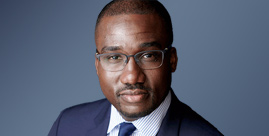
By Jean Accius
Senior Vice President
AARP Global Thought Leadership
Download PDF
By 2035, for the first time in American history, the number of adults in the United States age 65 and older will exceed the number of children. Every day, 10,000 people turn 65, and that trend will continue for years to come. People are living longer and healthier lives. By 2050, the annual economic contributions of the 50-plus age group in the United States will more than triple, from $8.3 trillion in 2018 to $28.2 trillion.
This means much potential opportunity —economic, cultural, social, and more. Creating that opportunity and addressing the realities of aging will require strategic risk-taking, courage to consider diversity of thought and opinion, and a strong entrepreneurial spirit. The complexity and interdependency of our society will require non-traditional collaboration across the public and private sectors.
Megatrends that Transform
The longevity opportunity, of course, isn’t happening just in the U.S. Extended human longevity is a reality all around the world. By 2030, nearly 1.4 billion people on planet Earth will be age 65 and older. Societies in both industrialized and developing countries will see their populations get older and live longer. These changing demographics are already transforming markets and industries and sparking innovation.
Here are four megatrends that will drive the next decade:
- Rebuilding from COVID-19: This is a defining moment. As the COVID-19 pandemic spread throughout the world, the data showed an alarming picture: older adults, particularly those in long-term care facilities, were being disproportionately impacted. Second, it became clear that Black and Latino people in the United States and some other countries were being hospitalized and dying from the virus at disproportionate rates. Around the globe, we are being challenged in ways we could not have predicted or even imagined, and we are racing to adapt to a new abnormal. While these have been difficult times for everyone, this pandemic has also provided an opportunity to pause and do a reset in many respects, and reimagine our collective future.
- Attention on Health Span: Simply living longer is not enough. It’s about being healthy longer. We must prioritize innovation around improving health, productivity, and quality of life for older adults worldwide. Not everyone is seeing the benefits of longevity gains, both from country to country and even within countries. In the United States, we continue to experience persistent disparities in life expectancy. However, around the globe we see that the countries with the highest average life expectancy also have the lowest levels of disparities. If we are to reverse the recently observed reduction in U.S. life expectancy, we must address disparities by income, race, and geography.
- A Very Human Future of Work: Work is changing at a rapid pace. With people living and working longer, employers are managing up to five generations on any given work day. This presents an opportunity for employers and people of all ages to reimagine what it means to earn and learn over a lifetime. A recent report estimates that encouraging people nearing retirement age to remain in the workforce could add $3.5 trillion to the economies of the 37 member countries in the Organization for Economic Cooperation and Development (OECD).
An increase in labor force participation by people ages 50-plus (especially 65-plus) will require a mindset change regarding work and purpose. We need to address ageism in systems and attitudes and tap companies’ intrinsic desire for a competitive advantage — linking that advantage to an age-inclusive workforce.
- Livable Communities and Urbanization: Nearly 70 percent of the world’s population already is living in urban environments. Countries and global institutions need to support significant infrastructure investments at the subnational and local levels to make communities more livable for people of all ages and abilities. This includes both physical infrastructures, such as adequate and appropriate housing and transportation, that allow people to safely function in and navigate their communities, as well as social infrastructures that enable people to continue to participate in and contribute to the economic, cultural, and social life of the community throughout their lives. Not doing so is discriminatory and will hamper progress in all areas of society on a massive scale.
A Time for Action
To fight for equity, create opportunity for all, and maximize the longevity dividend, we must act now.
Public- and private-sector leaders and product developers must break stereotypes when creating solutions. The design and delivery of products and services must accommodate growing longevity market opportunities. Advertisers, meanwhile, must authentically represent the full spectrum of living, prominently featuring people in life’s later years with frequency and without stereotype.
Global leaders must understand aging’s profound implications for both the public and private sectors. Areas in need of action to meet the needs of older adults are public policy, social programming, workplace culture, market outreach, and service delivery. To make such meaningful action happen, leaders in each of these areas must begin the intentional process of creating compelling solutions now.
None of this can be done in silos. We have to work together to test and develop new approaches to learning, earning, living, and connecting — making longer lives more equitable and meaningful.
Suggested Citation
Accius, Jean, 2020. "From the Executive Editor: 2020 Fosters a Renewed Look at Equity, Community, Longevity, and Work ." AARP International: The Journal, vol.13: 14-15. https://doi.org/10.26419/int.00045.001